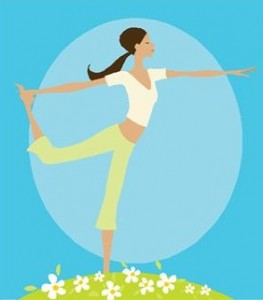There is a lot written about the “mind-body” connection. But little, if anything, is spoken about the “body-mind” connection. Here are three things to know:
1. Its not just mind-body
In the 1970s Dr. Herbert Benson of the Harvard Medical School discovered something strange. He found that as little as 20 minutes of meditation sets up a response in the body that reverses its stress and relaxes it. He called this the “Relaxation Response”. This was the discovery of the “mind-body” connection. Since then there has been much research done on this subject and the “mind-body” connection is now accepted as a fact. But it is not just the mind that has an effect on the body. The connection works in both directions. The body also has a strong impact on the mind.
2. Foundation of many limbs of yoga
In fact the body-mind connection is at the heart of many limbs of yoga. We must first understand that yoga is the state of mind when all thoughts are brought to rest. Such states are usually achieved via meditation, and hence yoga is primarily about meditation. So why do we need anything else besides meditation? The reason is that to calm down the mind we must also calm down the body. This is the body-mind connection. This means that the primary reason for asana practice, within the context of yoga, is to calm the mind down so that it becomes easier to meditate. The same goes for Pranayama (The practice of controlling the breath). This is also done with the primary goal to calm the mind down.
3. Virtuous cycle
The fact that the connection between the mind and the body works in both directions allows us to set up a virtuous cycle. This is a self reinforcing cycle and leads to positive results. This means that a calm mind de-stresses the body. And a de-stressed body allows the mind to further quiet down. A “virtuous cycle” is put into place, and if this is taken to its logical conclusion the end result is a mind that is completely quiet and in a state of yoga. This is why the limbs of yoga are not considered as sequential steps. They are instead called “limbs” because like the branches of a tree they all grow simultaneously and the growth of one reinforces the growth in others.
So what is the key take away? The key lesson is that instead of just practicing only yoga postures, we must also practice breathing exercises and meditation (along with other limbs of yoga) to set up a virtuous cycle. If you experience benefits from doing yoga postures, you will find that these multiply many fold if other limbs of yoga are also practiced simultaneously.
You may also like: Why You Are Not Trapped By Your Genes
Credits:This has been written by Raj Shah and edited by Ketna Shah.

